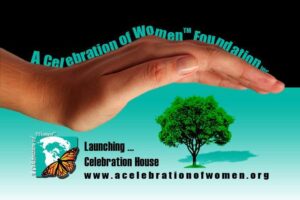Easter is one of the biggest Christian Holiday, it is the memorial day of the resurrection of Jesus Christ.
- Do you know what is the connection between the Easter egg, the bunny, and the sprinkling?
- Why is it always on a different calendar day?
Easter is a so called moving feast of the Christian church: in the year 325 the first synod of nicea decided that in every year the first Sunday, after the first full moon and following the spring equinox, we Celebrate the Easter Sunday.
Why the bunny?
In the old, pagan times, this time of the year was the reborn of the nature and the feast of fertility, so around the spring equinox.
In the German territories, these two part of the life belonged to Ostara, the Goddess of Spring, and she was the name giver of the English name “Easter” and the German name “Ostern“.
The date of Easter varies in a manner too complicated to summarize in a simple formula, and in most years differs between the usage of Western and Eastern Christianity (and the usages of the countries where they are respectively more influential).
Following the Council of Nicaea, the date for Easter was completely divorced from the Jewish calendar and its computations for Passover.
Thereafter, in principle, Easter fell on the Sunday following the full moon that follows the Northern spring equinox (the so-called Paschal Full Moon).
However, the vernal equinox and the full moon were not determined by astronomical observation.
Instead, the vernal equinox was fixed to fall on the 21st day of March, while the full moon (known as the ecclesiastical full moon) was fixed at 14 days after the beginning of the ecclesiastical lunar month (known as the ecclesiastical new moon).
Easter thus falls on the Sunday after the ecclesiastical full moon. The computus is the procedure of determining the first Sunday after the first ecclesiastical full moon falling on or after 21 March and the difficulty arose from doing this over the span of centuries without accurate means of measuring the precise solar or lunar years.
The model that was worked out assumes that 19 tropical years have the same duration as 235 synodic months (modern value: 234.997).
Since the 16th century, there have been differences in the calculation of Easter between the Western and Eastern Churches. The Roman Catholic Church since 1583 has been using 21 March under the Gregorian calendar to calculate the date of Easter, while the Eastern Orthodox continued and continue to use 21 March under the Julian Calendar. The Catholic and Protestant denominations thus use an ecclesiastical full moon that occurs four to five days earlier than the eastern one.
What do people do?
Easter is a religious holiday that commemorates the resurrection of Jesus Christ after his death by crucifixion.
For Christians, Easter is a day of religious services and family gatherings.
Easter Day is a popular day for attending church, getting together for a big family meal, and staging an Easter egg hunt. It is also a good time for people to decorate Easter eggs, join in Easter craft contests and to indulge in holiday recipes, such as mustard-crusted lamb and the Easter basket cake.
Public life
Many businesses, government offices, banks and liquor stores are closed on Easter Sunday.
Background
Many people organized spring festivals associated with the Pagan gods in ancient times. Many festivals celebrated nature’s rebirth, the return the land to fertility and the birth of many young animals.
The idea of modern day Easter eggs derives from these festivals.
Many ideas associated with spring were then linked with Jesus Christ’s crucifixion and resurrection as the Christianity spread throughout the world.
The crucifixion is remembered on Good Friday and the resurrection on Easter Sunday. The idea of the resurrection became joined up with the ideas of re-birth in Pagan beliefs. The Easter date depends on the ecclesiastical approximation of the March equinox.
Symbols
Easter candles are sometimes lit in churches on the eve of Easter Sunday. Some believe that these can be directly linked to the Pagan customs of lighting bonfires to welcome the rebirth or resurrection of the sun god.
Eggs of all types are an important symbol of Easter. They represent the rebirth of nature in the spring and the promise of new life in the spring and summer months to come and are seen as a reflection of the resurrection of Christ after his crucifixion.
Easter eggs, whether they are made of chocolate or candy or are decorated hens eggs, are common gifts all over the world during Easter.
However, the biggest Easter egg in the world is a representation of a Ukrainian Easter egg, known as a Pysanka, located in Vegreville, Alberta.
The Pysanka in Vegreville was constructed in 1974 to mark the centenary of the Royal Canadian Mounted Police and to celebrate Vegreville’s strong links with the Ukraine. It is made of more than 2000 aluminium triangles fixed together with nearly 7000 bolts and 177 internal struts.
The egg is more than 25 feet (nearly eight meters) in diameter and is decorated with a gold, silver and bronze design. Its construction represented significant advances in computer modeling, mathematical theory, architectural design and engineering construction.
After one whole year the season of Easter has finally come, Let us praise God and send him our never ending love. All you kids out there, the Easter bunnies are already here, So get your dancing shoes on, let us together celebrate and cheer.
Happy Easter to you, as you Celebrate this Holiday!
Happy Easter, blessings to One & All !!!
March 31, 2013 by








